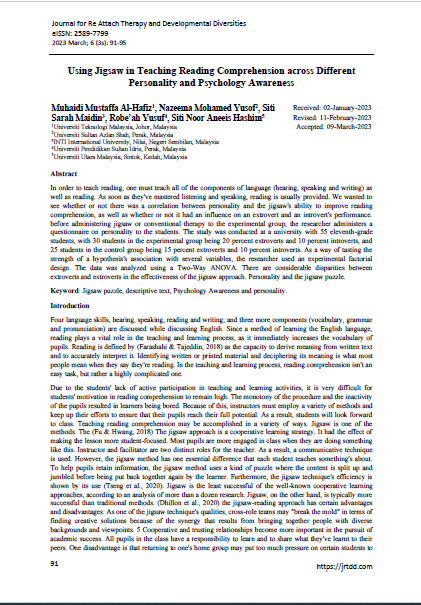Using Jigsaw in Teaching Reading Comprehension across Different Personality and Psychology Awareness
Main Article Content
Abstract
In order to teach reading, one must teach all of the components of language (hearing, speaking and writing) as well as reading. As soon as they've mastered listening and speaking, reading is usually provided. We wanted to see whether or not there was a correlation between personality and the jigsaw's ability to improve reading comprehension, as well as whether or not it had an influence on an extrovert and an introvert's performance. before administering jigsaw or conventional therapy to the experimental group, the researcher administers a questionnaire on personality to the students. The study was conducted at a university with 55 eleventh-grade students, with 30 students in the experimental group being 20 percent extroverts and 10 percent introverts, and 25 students in the control group being 15 percent extroverts and 10 percent introverts. As a way of tasting the strength of a hypothesis's association with several variables, the researcher used an experimental factorial design. The data was analyzed using a Two-Way ANOVA. There are considerable disparities between extroverts and extroverts in the effectiveness of the jigsaw approach. Personality and the jigsaw puzzle.

